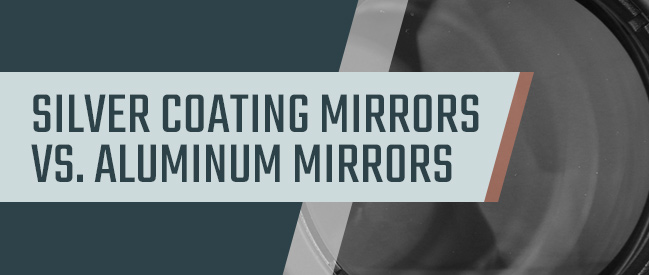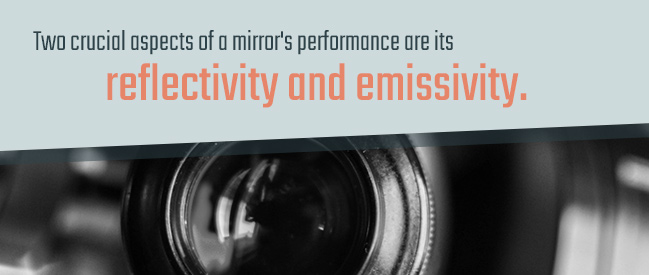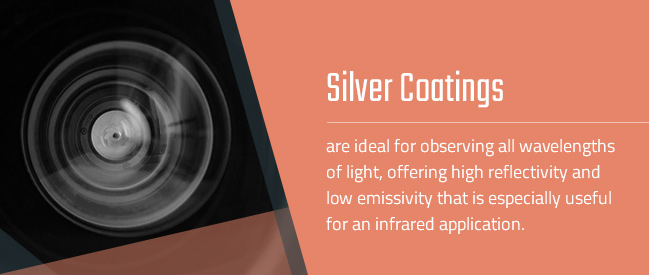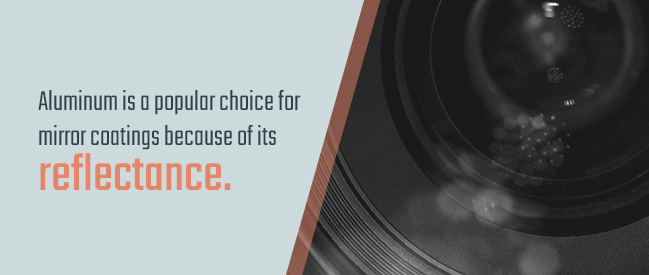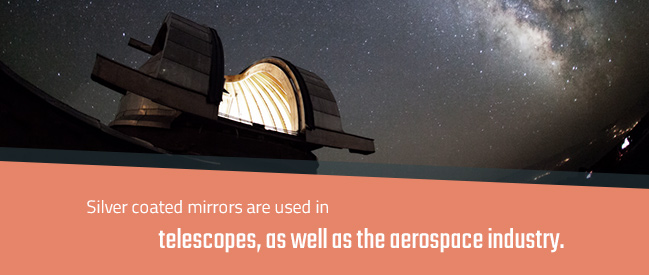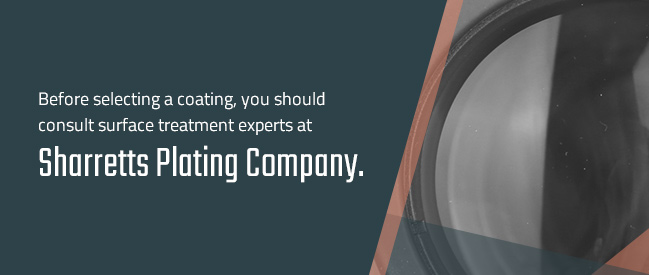Metal plating is the most common form of mirror coating. From gold and zinc to copper and platinum, many metals can be used to coat mirrors. Two of the most popular are silver and aluminum. Though each plating process has its differences, both aluminum and silver coating can offer unique benefits that improve the functionality of optical mirrors.
Optical vs. Household Mirrors
The differences between household mirrors and optical mirrors are key to accomplishing their intended goals. Though each of these mirrors is intended to reflect the light that is directed at its surface, their purposes are vastly different. Household mirrors are used to allow individuals to examine their appearance and may also be used as room decorations. Optical mirrors, however, must be much more versatile due to their utility in industrial and manufacturing applications. For instance, optical mirror systems have been used by NASA for the Hubble Space Telescope.
The defining difference between optical mirrors and household mirrors is the location of their coating. Household mirrors are coated on the back while mirrors used in optical applications feature front-surface mirrors. Metals are the most commonly used mirror coatings. Because of their reflectivity, layers of aluminum and silver are often used. Silver is the most reflective across the visible spectrum, reflecting 95 percent of light. Aluminum is slightly less reflective yet still can reflect 90 percent of light. Both coatings are excellent for use in many applications.
Depending on the application in which your optical mirror will function, you’ll want to select a plating that provides the most benefits. To help you feel confident in your decision, we have identified the advantages of each coating so that you can determine which is best for you.
Determining Optical Mirror Performance
The choice of coating may enhance or diminish the emissivity or reflectivity of the mirror. When choosing a coating for your optical mirror, you want to ensure the proper plating for the intended application. Determining the most applicable selection involves understanding how the properties of the various metal finishings will impact the mirror’s performance. Two crucial aspects of a mirror’s performance are its reflectivity, how much light it reflects, and emissivity, the energy radiated from its surface.
Reflectivity is inversely proportional to emissivity, which means that the more emissive a mirror is, the less reflective it is. A coated optical mirror can become more emissive if its coating tarnishes, oxidizes or is rough rather than smooth.
Various coatings are used to increase the reflection properties of an optical system. The number of coating layers, as well as each layer’s thickness, directly contributes to the rate of interference it provides. The placement of these coatings is just as significant as the metal used. When coatings are applied correctly, light transmissions can combine for a greater amplitude resulting from constructive interference. However, if a coating is applied at an unintended incident angle, it creates destructive interference and can render the coating itself completely ineffective.
Let’s discuss the beneficial properties of aluminum and silver, why they’re used for coating optical mirrors and which industries have found successful applications for each.
Benefits of Silver Coating Mirrors
Silver is an excellent metal to use for plating. Though tin is often assumed to be a low-cost substitute, its properties do not give it an advantage in tensile strength, heat absorption, corrosion resistance or conductivity. Silver is also used a more affordable alternative to gold plating. In astronomical optical mirror application, silver coatings provide benefits to primary, secondary and tertiary mirrors because of its high reflectance and lasting durability.
Compared to other plated metals, silver has the most applications and is found throughout nearly every common industry. Classified as a noble metal, silver possesses many inherent benefits that make it a versatile plating material. For years, the process of silvering was applied to coat the surface of glass to create mirrors. Silver coatings are ideal for observing all wavelengths of light, offering high reflectivity and low emissivity that is especially useful for an infrared application.
Silver offers high performance in nearly all of its properties. It has the highest known electrical and thermal conductivity, as well as high malleability and ductility. Silver is mined throughout the world and because of its favorable properties, is used for many diverse applications including silver plating. As the least expensive precious metal, silver is used in the automotive, telecommunications, electronics and solar power industries as a substitute for other metals like gold and palladium.
Though bare silver is considered a poor solution due to its ability to tarnish and its inability to reliably adhere to surfaces like glass, a protected silver mirror coating can be applied. These coatings can be highly reflective dielectric layers that resist tarnishing and improve adhesion. Although it is possible that these protected silver coatings may be susceptible to damage from ultraviolet light, choosing specific dielectric overcoats of higher thicknesses may prevent this degradation.
As a coating for optical mirrors, silver may outperform traditional aluminum coatings. Researchers studying the Gemini telescopes have determined that a silver mirror coating is effective for observing infrared and visible spectrum wavelengths, however, the properties of silver may tend to over-absorb ultraviolet light. Although aluminum may be a better solution, hybrid coatings that combine silver and aluminum are being explored.
Enhanced protective silver coatings are being explored to provide maximum reflectivity while improving the lifespan of the silver base. One prospective process that would create stronger corrosion barriers is through plasma-enhanced atomic layer deposition, using aluminum-oxide as the top layer that acts as a barrier to help protect against corrosion and maintain reflectivity. Results of testing show that these added layers successfully protect against corrosion and moisture. These plasma-enhanced barriers can be applied to optical mirrors that require high reflectivity and absorbency.
Benefits of Aluminum Mirrors
As a resource that can be found throughout the globe, the properties of aluminum have made it one of the most versatile non-ferrous metals that can be used in a variety of applications. Though in pure form it can be weak, chemical treating and alloying processes drastically increase its strength. These increased mechanical properties have made it a valuable resource throughout various applications in industries including aerospace, medicine, optics and defense.
The two distinct aluminum alloy classifications are cast and wrought. Casting is the most widely used and is applied to products for the automotive industry. There are seven types of wrought alloys with varying limits of tensile strength and can be used for plating applications. Both the electroplating and electroless plating processes are applicable for aluminum, especially in telecommunications and energy industries.
Aluminum is a popular choice for mirror coatings because of its reflectance. With the highest reflectance of any metal in the ultraviolet and infrared spectral ranges, aluminum only falls behind silver in the visible light and near-infrared ranges. Bare aluminum can be used in optical mirrors for telescopes in space to achieve larger bandwidths of light. Unfortunately, the natural creation of aluminum oxide can reduce the reflectiveness of the aluminum coating. To counteract this, additional protective coatings can be applied over the aluminum.
A natural barrier oxide layer can form over aluminum mirrors, protecting it from further corrosion. Unfortunately, this barrier is not easy to clean and can be altered based upon other environmental factors. Because of this unreliability, protective coatings are often placed over the bare aluminum. This usually involves a dielectric coating that successfully protects the surface from damage. However, this could potentially reduce the reflectance of the aluminum. An atomic layer deposition technique or another deposition method could potentially improve protection while limitedly effecting mirror reflectance.
Though the presence of oxygen may cause aluminum to corrode, even if the aluminum does have an additional protective coating, there is hope that future optical mirrors used in an astronomic application could be positioned far enough from the Earth not to be impacted by these environmental factors. In this case, mirrors with protected aluminum coatings may be well-preserved and function without issue for long periods of time.
Applications That Use Silver Plated Mirrors
Silver coated mirrors can be used in telescopes. For example, the Gemini Observatory has switched from using an aluminum coating on their telescopes to a silver coating. This resulted in a direct improvement in lowering the emissivity of their primary and secondary mirrors and increasing the telescope’s sensitivity. As one of the only telescopes to use silver mirrors, the Gemini Observatory is achieving significant infrared optimization. Though environmental factors do lead to the silver tarnishing, they employ an annual multi-layer coating process to protect the surface from tarnishing.
Researchers believe that, as new mirror-coating technologies are developed, they can provide increasing positive benefits when applied to optical mirrors in new telescopes. They even suggest that current telescopes could see a dramatic increase in efficiency and reflectiveness by switching from an aluminum coating to these new silver coatings. This could potentially offer a cost-effective way to allow existing telescopes to reflect more light and increase their application limitations.
The aerospace industry utilizes silver coating technology as well. The Kepler Mission sought to explore the structure and diversity of planetary systems. While building spacecraft for this mission, engineers needed to design and build optical mirrors to enable them to continuously monitor and measure the brightness of stars. The large and lightweight primary mirror their team constructed needed to be sensitive enough to detect planetary movement, so they utilized an enhanced silver coating technology to increase the mirror’s responsiveness to light.
Applications That Use Aluminum Mirrors
Like silver coating, an aluminum coating can also be used in telescope optics. The NASA Cosmic Origins Program developed aluminum coatings to maximize reflectivity for their astronomical telescopes. This coating was used particularly to help their scientists study the far ultraviolet part of the light spectrum. The durability of the aluminum coating was effective enough to enable them to achieve a far ultraviolet reflectance of up to 80 percent throughout the year without the coating succumbing to significant deterioration.
The optics system on the Hubble Space Telescope is an excellent example of the application of aluminum coatings. Known as the Optical Telescope Assembly, this telescope’s optic system collects infrared, visible and ultraviolet light through the use of two mirrors. Each of these mirrors is coated with aluminum to provide optimal reflectivity. To keep the surface of the aluminum from oxidizing, layers of magnesium fluoride coat the top aluminum layers.
SPC Optical Mirror Plating
Optical mirrors are used across an assortment of industries, ranging from telecommunication and aerospace industries to optics and medical applications. Depending on the application, certain metallic mirror coatings must be used. Comparing the properties of silver and aluminum, each possesses inherent properties that positively impact factors like emissivity, reflectivity and durability. However, their differences also heavily influence application. For instance, though aluminum may offer a higher rate of reflection, silver may offer lower emissivity. Before selecting a coating, you should consult surface treatment experts at Sharretts Platting Company.
At SPC, we understand that the unique needs of your industry dictate that the optical mirrors you use need to deliver optimal performance. To meet the technical demands of your requirements, we use several different plating techniques including autocatalytic, electroplating and electroless methods. Our variety of precious and non-precious metals can be plated for applications ranging from power generation and optics to the medical, oil, gas and aerospace industries. For nearly 100 years, we’ve provided our clients with innovative metal finishing solutions to suit their specific needs. As one of the leading plating companies in the industry, SPC is ready to provide you with reliable and affordable silver coating and aluminum plating for your optical mirrors.
SPC: Industrial Surface Treatment Experts
Sharretts Plating Company is recognized around the world as a leader and innovator in the metal plating industry. As full-service plating business, we dedicate our skill and expertise to enhancing our customer’s competitive positions. Our scientists, engineers and production staff continue to develop new ways of enhancing our production process to improve quality, lower costs and reduce lead times. SPC is focused on helping your manufacturing or industrial operation reach new levels of success with our ISO certified metal coating and plating services.
Specializing in metal finishing solutions, SPC is ready to lend our knowledge and expertise to help you determine the best plating for your optical mirrors. We’re able to efficiently coat metals, plastics, ceramics and glass. With hundreds of years of combined plating experience, we’re equipped to meet the needs of nearly any industry. SPC is the proud plating business leader and innovator that you can count on to satisfy even the most demanding technical requirements.
Choosing the right plating for your application can be simple when you are knowledgeable about the benefits and limitations of each coating option. SPC is here to ensure that all of our customers select the plating solution that will most effectively help them reach their business goals. We provide consulting services that will assess your operation and recommend a reliable and affordable metal finishing solution that is the ideal application to suit your needs. Call Sharretts Plating Company and receive a free quote today!


